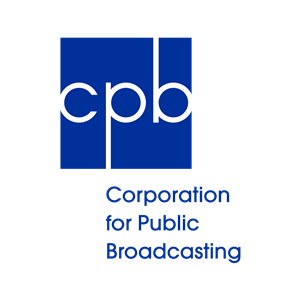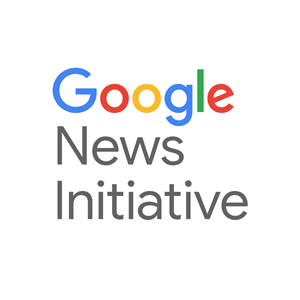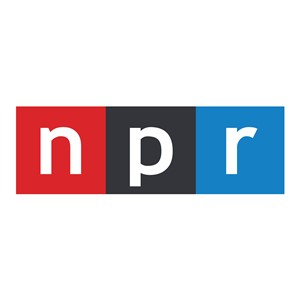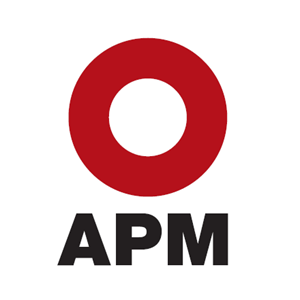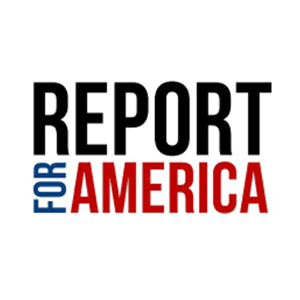Listen: Kelly McBride Keynote at #PMJA2025
Becoming essential: Find out what your community needs most & do that!
Discover how public media can transform from a supplementary news source to the essential, dominant provider of local journalism that communities can't live without—and the strategic roadmap to make it happen. Below are the audio and transcript of the #PMJA2025 keynote from Poynter senior vice president Kelly McBride. Thanks to Poynter for allowing us to share the transcript.
Special thanks to the Corporation for Public Broadcasting for sponsoring #PMJA2025 and this keynote.
A lot of people have a lot of questions about what is going to happen to public media. So, let’s talk about our future.
To do that, I want to start with a story from my personal and distant past that still informs how I think about public service.
The summer before my freshman year in high school, I volunteered as a candy striper on the pediatric floor in a local hospital. There were some really sick kids on this floor. I worked in a big classroom with arts and games. Most of the kids that I worked with had cancer or cystic fibrosis. Back then, in the 1980s, children with those diagnoses would spend weeks and months in the hospital.
The kids were from all over Northeast Ohio. They ranged from toddlers to teenagers. And they all roamed around in sweats and jammies, with uncombed hair, rolling their IV poles the way we roll our luggage through an airport.
They were there so long they developed their own little village, with several cliques and a clear hierarchy. There were romances and the occasional bullying, especially of me for being squeamish and dumb. But also for having something that they didn’t have, which was my health.
I was an interloper. It was the first of many times in my life that I would feel that self-conscious feeling of someone who had parachuted into a community, uninvited.
One time, I was helping a younger girl with an art project when one of the nurses broke out the big box of popsicles. The girl got up to make sure she could get a red one. She was maybe 8 years old. She was bald from her treatments and pale. But she was moving because she wanted that red popsicle.
Her foot caught on a chair and she tripped — bad enough on its own — but the IV needle was in her hand. As she tried to catch herself, the tube went taut and yanked the pole. At first, it tipped slowly, rocking up onto two wheels. I thought it might recover. But it didn’t. It crashed into another IV pole — one connected to a different kid — which also toppled, ripping out his needle too.
As this calamity unfolded in front of me, I let out a loud gasp. The sequence of events went like this: I saw her fall and saw the needle pull on her hand, I looked up and saw the top of the pole falling, and I let out this loud, involuntary gasp.
Everyone in the room startled and turned to look at me. Then the pole crashed. The second pole crashed. And suddenly, every kid in the room was crying — even the ones nowhere near the calamity.
The nurse with the popsicles pushed a button and quietly radioed for backup. A few other nurses came in and very calmly restored order. They picked up the poles, wiped up the messes. They checked the IVs, reinserted needles. Dried some tears. And then, one of them pulled me aside and told me in no uncertain terms that I was never ever to gasp like that again. And if I didn’t think I could do that, she suggested that I was probably volunteering in the wrong place.
As one of the older patients who was probably my age walked past, he added the emphasis that the nurse was surely thinking. He said, “Yeah dumbass.”
At that moment, a question took root that gnaws at me to this day: In my efforts to make things better, am I possibly making things worse?
Then, to minimize my ability to cause any more chaos, the nurse asked me to help another patient, a boy, with his math homework. He had a huge stack of worksheets that he had fallen behind on.
As we sat down, he laid his arm out on the table and put his head down on it, and told me that he was too tired and that he had a headache. The nurse rolled her eyes. I had no idea if he was exaggerating, but I really wanted to be helpful. I needed something to go right.
We talked for a while. We got some popsicles. Finally, we agreed that I would do one problem and he would do one problem. Sometimes he made me do two problems. There were more than 10 pages. First it was multiplication, then it was long division, and then a mixture. Sometimes I would do the problem wrong to see if he cared. He did.
It took a long time, but together we finished this packet, at which point he was allowed to play with the other kids.
As the kid was heading off, a doctor, who was wandering through the playroom, praised the kid for getting it done. But I had serious doubts. It seemed to me like when you have cancer, you should get a pass on your math homework. So, I asked the doctor if making this kid do his math homework was absolutely necessary.
For the second time that day, I got a short but stern lecture. The doctor told me this, “If you tell these kids they don’t have to do their math homework, you are telling them that they don’t have to prepare for their future. Think about what that means.”
***
We cannot let the threats that we face in public media prevent us from preparing for our future. Our communities need us to prepare for their future. I’m thrilled to see this conference sell out because you wouldn’t be here if you didn’t believe in our future.
I believe there will come a time when public media and nonprofit media are the dominant providers of local news in most markets across the country.
So I want to start imagining what that looks like. You will be providing people with information that they cannot live without. Our reporting and public affairs programming, our podcasts and our digital stories, our social media feeds and YouTube programming will be absolutely critical.
Your audience will not be able to go a full week or even a full day without hearing from you.
Public media will be the dominant local news provider.
This future may be most difficult to imagine if you’ve been in public media for a long time. There are many things about our origin story that get in the way.
We were not created with this future in mind. With the exception of the most remote places in the United States, public media was created mostly as a supplement to the rest of the media market. We were designed to be a backstop, a last resort in an environment where most of our markets were served by multiple commercial outlets, including multiple newspapers and free over-the-air television.
The original supporters of American public media were more concerned with the ability of news consumers to access reliable national and international news.
Those who want to dismantle government support for public media argue that the internet has been a great equalizer, that as the barriers to distributing news have evaporated and with that quality news has proliferated. And they aren’t wrong when it comes to national news.
There are many great nationally focused news products out there. But there are many more mediocre and horrible news products out there. And the good ones cost money, and the bad ones are free.
So we absolutely do still need public media in this country. And this transformation has already begun.
***
So I’m asking you, the news leaders in public media: What is your plan to be essential in your community? Many of our stations have enhanced their daily offerings, whether it’s newsletters, podcasts, or TV news shows. But is the work essential?
Can your audience get through a day if they don’t read it or hear it or watch it?
How do you make it essential? First, you have to ask what topics you own.
Identify the topics that you, as a journalism organization, are absolutely going to own. You are going to be the No. 1 provider of information to your community on that topic.
That means you have to know your community.
To get your list of possible topics to own, you have to get some information, a lot of information, from the people in your community. What do they need? What are they worried about? What are the ongoing local sagas that people have a hard time keeping up with? What objects or stories provide a unifying thread for the community?
This information is found in surveys, data from your site, data from the government, and other people’s research. If you are a news executive, you or someone that you designate has to be in charge of assembling as much data as you can about the things your audience cares about.
You can’t do this alone. Team up with your marketing department, your audience team, your development team. But you cannot turn this decision over to them. The journalists must stay in charge.
Do the work to make a solid list. Once you have a list of, say, 10 possible issues or topics, unless you have a front-line staff of 40 to 50 content creators, you have to whittle it down and prioritize it.
You may not pick the top three issues for a number of reasons.
To figure out which topics you are going to own, you have to know what the narrative is for each topic.
You can’t just cover something like affordable housing, which is likely to be on the list in a lot of our markets. If you are going to own that topic, you have to make a promise to the audience about what you are going to deliver to them that is of value.
Here’s an example of what that promise might look like.
Affordable housing: By looking at how people find homes, stay in their homes or are forced out of their homes, we are going to document the impacts of housing prices on our communities and examine what public policy can do to enhance the livability of our region.
Once you nail the narrative, you’re still not done.
You need a list of subtopics, a strategy for defining beats. It might look something like this:
- What does the insurance burden look like in different households?
- What about the tax burden?
- How do renters address crappy landlords?
- What is the impact of Airbnb and other vacation rentals?
- Where and how do single teachers and service industry people live?
And then you’re going to have a list of stories that you are going to tell, not just once, but over and over again. Because if this topic is really essential, then you people won’t get sick of hearing about it.
If this is an essential topic to you and your community, you should be able to tell a story about this every single day and people won’t get tired of it.
If I were crafting an essential news strategy in a market where affordable housing was our issue, here’s a list of regular stories I would do, once a week.
- What does $2,000/month get you in X neighborhood?
- Go house/apartment shopping with a family once a week
- Because affordable housing is such a crisis in our region, here’s what the following are doing to fix this problem or alleviate the symptoms:
- city halls
- county commission
- school districts
- large employers
- state legislature
- state agencies
- charity groups
- churches
- regular people
When you are essential, you have expertise. That means you’ll never run out of stories.
Here are some great examples of public media owning a topic:
- North Country Public Radio’s coverage of how the region is addressing climate change
- Arizona Public Media’s ongoing coverage of reproductive rights
- WBUR’s coverage of access to health care, particularly following the bankruptcy of a health care system
- Louisville Public Media’s ongoing accountability coverage of the Kentucky legislature
***
But what about the resource problem?
Yes, many of us are too small. Maybe most of us are too small.
You are too small if:
- You don’t already have a daily metrics dashboard that gives you information about your audience and your work.
- You don’t have enough front-line resources to own three topics.
So start small. What do you need to own a single topic? I would say you need at least 1.5 journalists whose job descriptions say they own that topic.
If you are too small, you need partners. Which is hard, because great partnerships require true leadership and a little bit of magic.
But partnerships produce great work. Look at KUOW’s coverage of mental health, which is partnered with The Seattle Times. “The Lost Patients” podcast might be the pinnacle of that collaboration, but think of all the other stories about access to mental health care that KUOW’s audience heard and read because of that partnership.
Think about the work that Vermont Public has done around criminal justice dysfunction through its partnership with the alt-weekly Seven Days.
Remember, this is about imagining your future and acting like it’s actually going to happen. Go back to my allegory. We journalists are not the children in that story. And we’re certainly not the hapless candy striper. We are the super-competent nurses. We get stuff done. We know there’s a future and we’re going to act like it every single day.
So map it out. What’s one issue around which you are going to become absolutely essential to your community?
This is your future, but your community won’t follow you unless you can clearly see it yourself.
If you don’t believe the math homework matters, nobody else will.
So do your math homework.
Keep preparing for a future where communities everywhere consider public media the first choice for local news.
Thank you.
#PMJA2025 Sponsors
-
-
-
-
-
-
Current
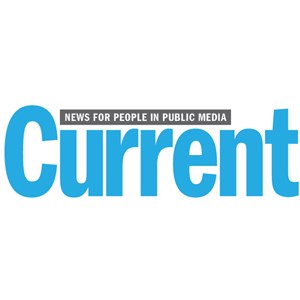 4400 Massachusetts Avenue Northwest Suite LL05
4400 Massachusetts Avenue Northwest Suite LL05
Washington, DC 20016-8122
United States -
-
-

